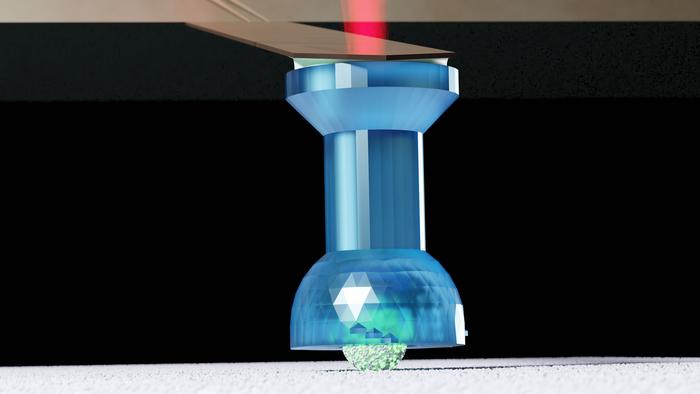Suspensions comprised of tiny particles dispersed in a liquid form the backbone of numerous industrial applications and everyday products, ranging from paints and concrete to food products like ketchup and orange juice. These suspensions challenge our intuitive understanding of fluid mechanics; when subjected to external forces, they can behave in non-Newtonian ways, such as thickening instantaneously before our eyes, akin to a solid rather than remaining a smooth fluid. This behavior is not merely a quirk of physics; it has profound implications for industries that rely on the controlled flow of materials.
The physics underlying these puzzling phenomena can be traced back to the microscopic interactions between the solid particles in the suspension. When these particles are under stress, they must rearrange themselves, a process that can lead to increased viscosity. At low stress conditions, particles can roll past one another relatively freely. However, as stress builds, the resulting forces can lead to scenarios where particle movement becomes hindered, requiring a much greater force to achieve the same flow, which results in that notable thickening effect.
The relationship between these microscopic interactions and the macroscopic properties of suspensions is a focus of ongoing research. A group of scientists from ETH Zurich, led by Lucio Isa, has recently developed a breakthrough measurement technique aimed at deciphering the frictional forces that influence particle interactions in these mixtures. Using an atomic force microscope, which allows for precise measurements on a microscopic scale, the researchers set out to quantify the frictional forces at play between individual particles that are only a few micrometers in diameter.
In a novel setup, a special holder was designed to capture a single spherical particle, allowing for the exploration of its interactions with similar particles when subjected to movement. The atomic force microscope facilitated the simulation of the dynamics involved when two particles traverse past each other. By carefully analyzing the measurements taken during these interactions, the team was able to derive invaluable insights into the forces that dictate the flow behavior of these particle-laden fluids.
Understanding these interactions is particularly complex, especially when examining particles as small as 12 micrometers, where conventional measurement techniques would falter. Simon Scherrer, a doctoral student involved in the study, engaged in meticulous development of the measurement setup, indicating that numerous iterations were required before achieving a functional design that could capture the subtle yet significant forces at play. This attention to detail is crucial, as even the slightest misalignment or miscalculation can lead to misleading results.
The research team discovered that the surface characteristics of the particles play a pivotal role in determining how they interact with one another. For instance, particles with smooth surfaces tended to glide past one another effortlessly, highlighting a distinct frictional behavior that contrasts sharply with the interactions of rough or sticky particles. When rough or sticky particles were pressed together, they acted like gearwheels, allowing for rolling motion that encountered considerably less resistance. This behavior is fundamental to understanding the dynamics of suspensions, as the interplay between these forces heavily influences viscosity and flow characteristics.
Equipped with the ability to measure both rolling and sliding friction, the researchers now hold valuable coefficients that can be integrated into computational models. These models will enable scientists and engineers to simulate suspensions with high particle concentrations, allowing for optimization of their flow characteristics—essential for their applications across various industries. For example, in the concrete industry, adjusting the flow of materials could lead to better mixing and application processes, ultimately improving product quality and efficiency.
Beyond construction materials, findings from this research can also significantly impact the field of microelectronics. Currently, manufacturers employ dense suspensions containing metallic or conductive particles for soldering components onto circuit boards. The flow behavior of these materials is critical; if excessive pressure is applied, the paste can unexpectedly thicken and obstruct the nozzles, leading to operational inefficiencies. Hence, having a granular understanding of particle interactions can lead to the development of more reliable manufacturing processes that minimize such risks.
As scientists continue to unravel the complexities of microscale interactions in suspensions, the prospect of engineering improved mixtures becomes increasingly tangible. The implications extend far beyond academia, touching sectors that directly impact daily life and global economies. The detailed knowledge regarding microscopic behaviors not only aids in developing more effective materials but also opens doors to innovative approaches in product formulation across a variety of industries.
This research offers a window into the mechanisms that underlie the essential functions of a multitude of materials we often take for granted. The intersections of physics, engineering, and material science converge in this work, pointing to a future where enhanced suspension performance becomes a cornerstone of industrial innovation. With continued exploration of these microscopic forces and their broader implications, the potential to refine everyday materials remains vast.
In closing, the investigation into the rolling and sliding interactions among single particles serves as a reminder of how intricate the world of material science truly is. With researchers like Lucio Isa and his team at ETH Zurich pushing the boundaries of knowledge, we stand on the precipice of a deeper understanding that could transform how we perceive and utilize the materials that shape our world.
Subject of Research: Frictional forces in particle suspensions
Article Title: Characterizing sliding and rolling contacts between single particles
News Publication Date: 6-Mar-2025
Web References: Proceedings of the National Academy of Sciences
References: Scherrer S, Ramakrishna SN, Niggel V, Hsu C-P, Style RW, Spencer ND, Isa, L. Characterizing sliding and rolling contacts between single particles, PNAS March 6, 2025 122 (10) e2411414122
Image Credits: Simon Scherrer / ETH Zurich
Keywords
Suspension, non-Newtonian fluids, particle interactions, friction, material science, industrial applications, atomic force microscope, viscosity, microelectronics
Tags: applications in food productscontrolled flow of materialsindustrial applications of suspensionsmicroscopic particle interactionsnon-Newtonian fluid behaviorparticle rearrangement under stressresearch on fluid dynamicsrolling particles in fluidssolid-liquid interactionsstress-induced thickening in fluidssuspension fluid mechanicsviscosity in particle suspensions





